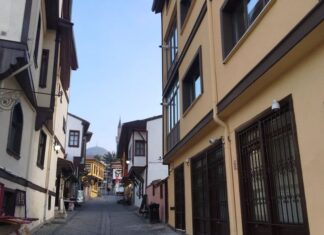Many aspects of that story pull us into the world of Roman late antiquity: clashing religious practices, legal interference in religion, the brutality of the laws, and the willingness of all parties to believe a very great many impossible things before breakfast. Since Christians believed that there were in the world demons happy to help bad men perform wondrous deeds, the right response was to punish the bad men accordingly. Theoderic’s role in this case can retain our attention for this much: in passing the case to the appropriate civil authorities at Rome, he did what an emperor was supposed to do. Whatever Basilius and Praetextatus really did or thought, no one at Rome would think that Theoderic displayed highhandedness, heresy, or a failure to maintain standards.
The Rome that produced these magicians and their judges was, in the minds of those who lived there, the Rome of old. The senate met, poets read, young men went away to school in the traditional ways. Those who lived in Theoderic’s Rome could not have known that they were but two generations away from the sudden disappearance of many of these traditions and practices. Theirs was the Christian Rome of late antiquity, to be sure, where a few well-advised families had become leaders in the new aristocracy of the church, and so bishops of Rome by now tended to be chosen from families who had already held the office, just the way the republic used to produce its consuls. Theoderic, through his ghostwriter Cassiodorus, praised the consul Felix, on his appointment to office for the year 511, as the “Cato of our time”: “Devoted to literary studies, he spends his whole life in learned pursuits. His eloquence did not come from merely touching his lips to the Aeonian fountain but by drinking deeply there. His books are full of strenuous argument, his tales are told with gentle pleasure, and he sows his words so well that he is the equal of the authors he had read so often . . . He had investigated the depths of natural science as well, stuffing himself on the Attic honey of Cecrops’ teachings”14—the audience was expected to remember that Cecrops had been the founder of Athens and lay buried on the Acropolis in the Erechtheion adventure bulgaria tour.
Theoderic’s death did Pope Agapetus I
Though Rome had been a Christian city for 200 years, Cassiodorus was troubled by the traditionalism that kept the secular schools open and by the absence of any comparable schools with Christian content. Only after Theoderic’s death did Pope Agapetus I, in 535-536, bestir himself to establish some kind of formal institution for Christian biblical and doctrinal studies—and the effort, tellingly, came to naught, ostensibly because of warfare and political distractions, but at least in part because it was an idea whose time had not yet come. As long as the old schooling was available, it was the surest indication of the culture, the leisure, and the wealth of the urban aristocrats who took advantage of it and used it to define their own places in the world.
Theoderic the builder and restorer put his support behind big projects, but he also appointed auditors to supervise job sites and expenses and to ensure the best use of funds, and in at least one case he directed the city prefect to recover funds from fraudulent contractors. His letters about reconstruction and renovation often suggest that contractors reclaim building materials from ruins and derelict buildings, for use on signature monuments. This is a sure sign that some of the air had gone out of the bubble of preposterous wealth that protected Italy for centuries, when it and especially Rome were filled with the riches of the whole Roman world. Archaeologists are not so sure about Theoderic’s supposed habit of reusing materials, finding evidence at least in Ravenna that he went out of his way to build afresh Theoderic barely slapped Inportunus and Theodorus.
When the right combination of patron and project came together, Theoderic could be very grand. He selected Symmachus, Boethius’s father-in-law and patron, to take in hand the restoration of the Theater of Pompey in the Campus Martius. Built in 55 BCE at the height of Pompey’s power, while his junior partner Julius Caesar made his name and power in Gaul, this building had been the wonder of the city in its time. Said to seat 40,000 people (10,000 may be nearer the mark), it imitated the theaters of the Greek world and introduced ancient grandeur into a city that was still an upstart in those days. It had devilish connotations by now, because it had fit the familiar Roman pattern of a theater-temple, with a shrine to Venus the Victorious at the top of the central section, and forming the rows of seats to appear as stairs leading to a temple. The shows in such a theater were part of religion, and religion was part of what Romans went to any theater to find, in the stories of the gods and heroes.








